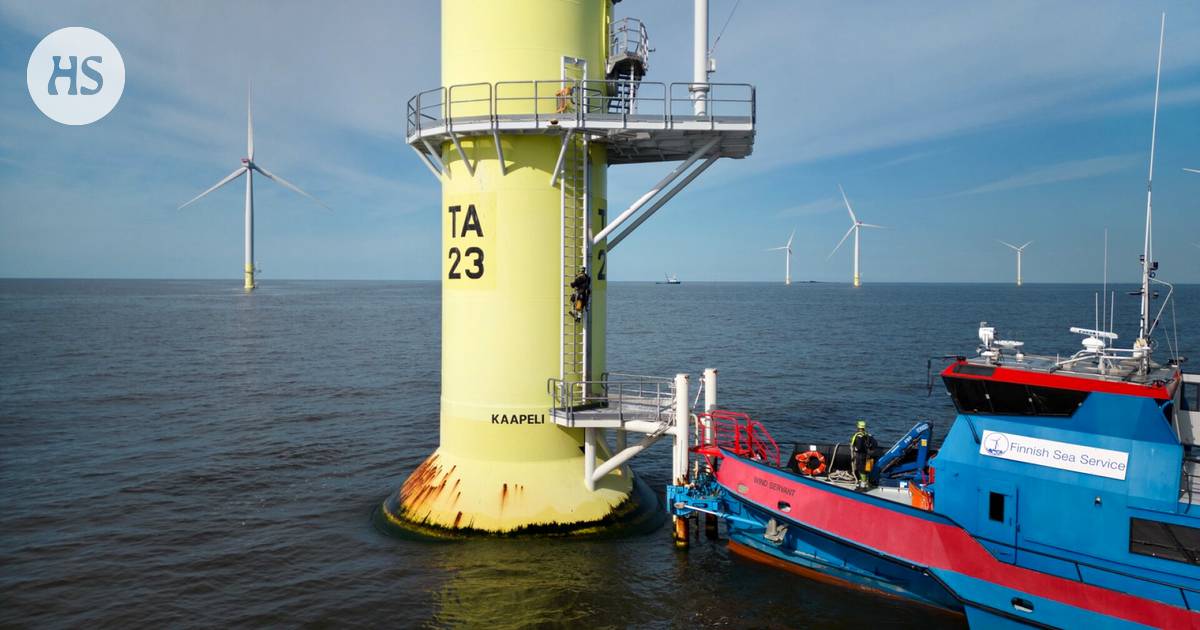Economic growth|A report by the consulting company Oxford Economics reveals the long-term growth potential of the Finnish economy if Finland succeeds in its emission targets.
The summary is made by artificial intelligence and checked by a human.
Switching to clean energy would increase Finland’s gross domestic product by 4.5 percent by 2050 compared to the baseline scenario.
In the climate leader scenario, Finland would achieve net zero emissions by 2035.
Green investments would support innovation and productivity and increase energy exports and real incomes.
To clean the transition to energy would give a strong growth boost to the Finnish economy, according to a recent report.
According to a report by the consulting company Oxford Economics, according to the most positive forecast, Finland’s real gross domestic product (GDP) will rise by 4.5 percent by 2050, compared to the forecast in which Finland compromises on its emission targets. In the most positive forecast, it is assumed that the green transition will be accelerated and that Finland will not relax the target level in climate policy. Cumulatively, real GDP growth would be almost as much as Finland’s gross domestic product last year.
The report compares the economic effects of the green transition using three scenarios in the years 2024–2050.
Oxford Economics made a report for Akava Works, a think tank of the Employees’ Association Akava. The report is based on the latest academic research, interviews with Finnish experts and modeling.
Finland’s goal is to achieve carbon neutrality by 2035. However, the Ministry of the Environment warned in the latest annual climate report that neutrality will not be achieved by 2035 without additional measures. Finland’s goal is more ambitious than the goals set by the EU.
An explanation in the most positive so-called climate leader scenario, Finland will achieve net zero emissions by 2035.
In this case, the real growth of the economy would be an average of 0.94 percent per year during the forecast period, thanks to the growth of green investments.
According to the report, investments in green energy production would support innovation and productivity and increase energy exports and real incomes.
If emissions were to decrease more slowly than in the most positive scenario, and Finland would not reach its emission targets, GDP would grow by an average of 0.80 percent in real terms during the forecast period, according to Oxford Economics’ forecast.
In this so-called delayed development scenario, the transition to clean energy would slow down, for example, due to the capacity limitations of the electricity grid and the rigidity of the labor market. Finland would not attract green investments and the benefits from reducing emissions would decrease.
In both scenarios, economic growth would be faster than in the so-called basic scenario, where Finland decides to relax its climate goals.
In the climate leader scenario, the growth rate would be 0.2 percentage points stronger than in the so-called basic scenario, but only 0.03 percentage points stronger in the delayed development scenario.
Oxford Head of Economics Felicity Hannon says that the climate leader scenario reflects the long-term growth potential of the Finnish economy if Finland succeeds in its emissions targets.
“The climate leadership scenario is ambitious, but Finland has several competitive advantages compared to other European countries,” says Hannon.
Hannon says that, first of all, Finland has natural resources that are needed for the battery industry. Secondly, three quarters of Finland’s surface area is covered by forests. Finland thus has a natural carbon sink, which several other competing countries do not have.
In addition, Finland has a relatively well-educated workforce and the relatively strong engineering and research staff needed for the transition, says Hannon. Finland was also the first country in the world to introduce a carbon dioxide tax on fuels in the 1990s and was early in adopting low-carbon solutions.
“Finland is already a pioneer in climate policy,” says Hannon.
Correction May 22, 2024 at 4:30 p.m.: Contrary to what was written earlier in the text, according to the report, Finland’s real GDP will not rise in the climate leader scenario by 4.5 percent by 2050, but by 4.5 percent higher than in the base scenario. Removed the reference that the cumulative GDP growth would be 226 billion euros, because Oxford Economics has used the prices of the reference year 2015 in its report. At the prices of the reference year 2023, the increase would be greater than 226 billion euros.
